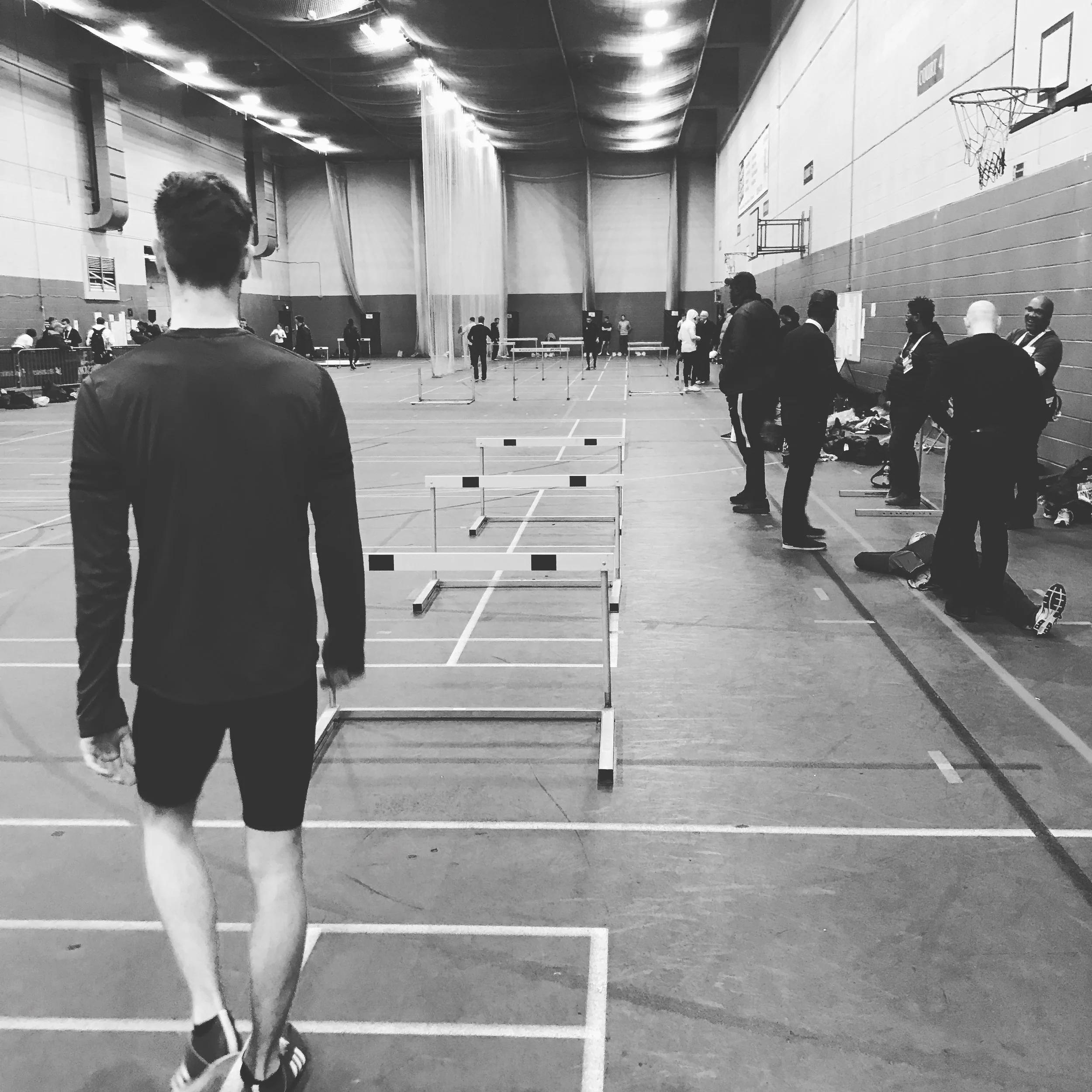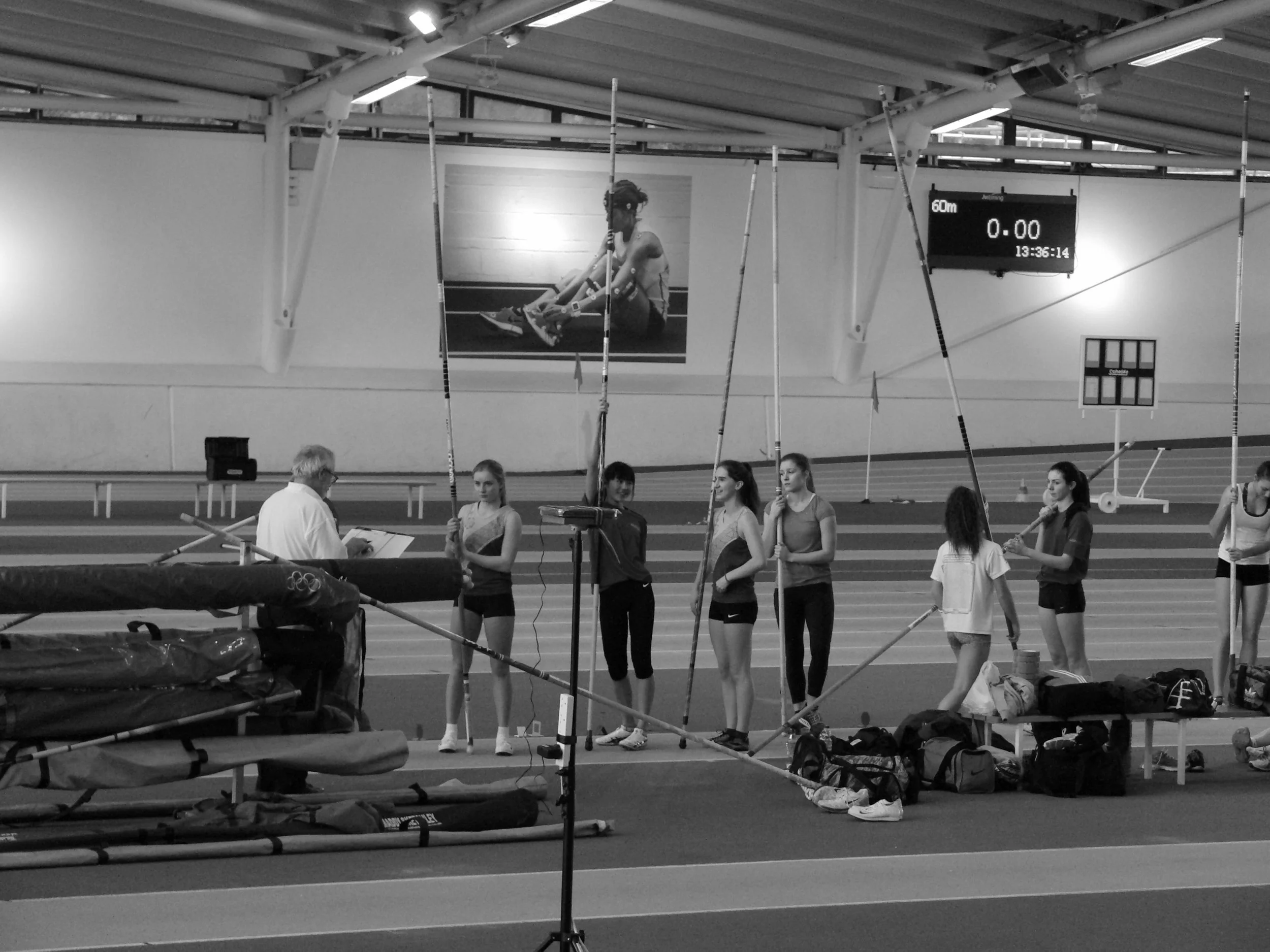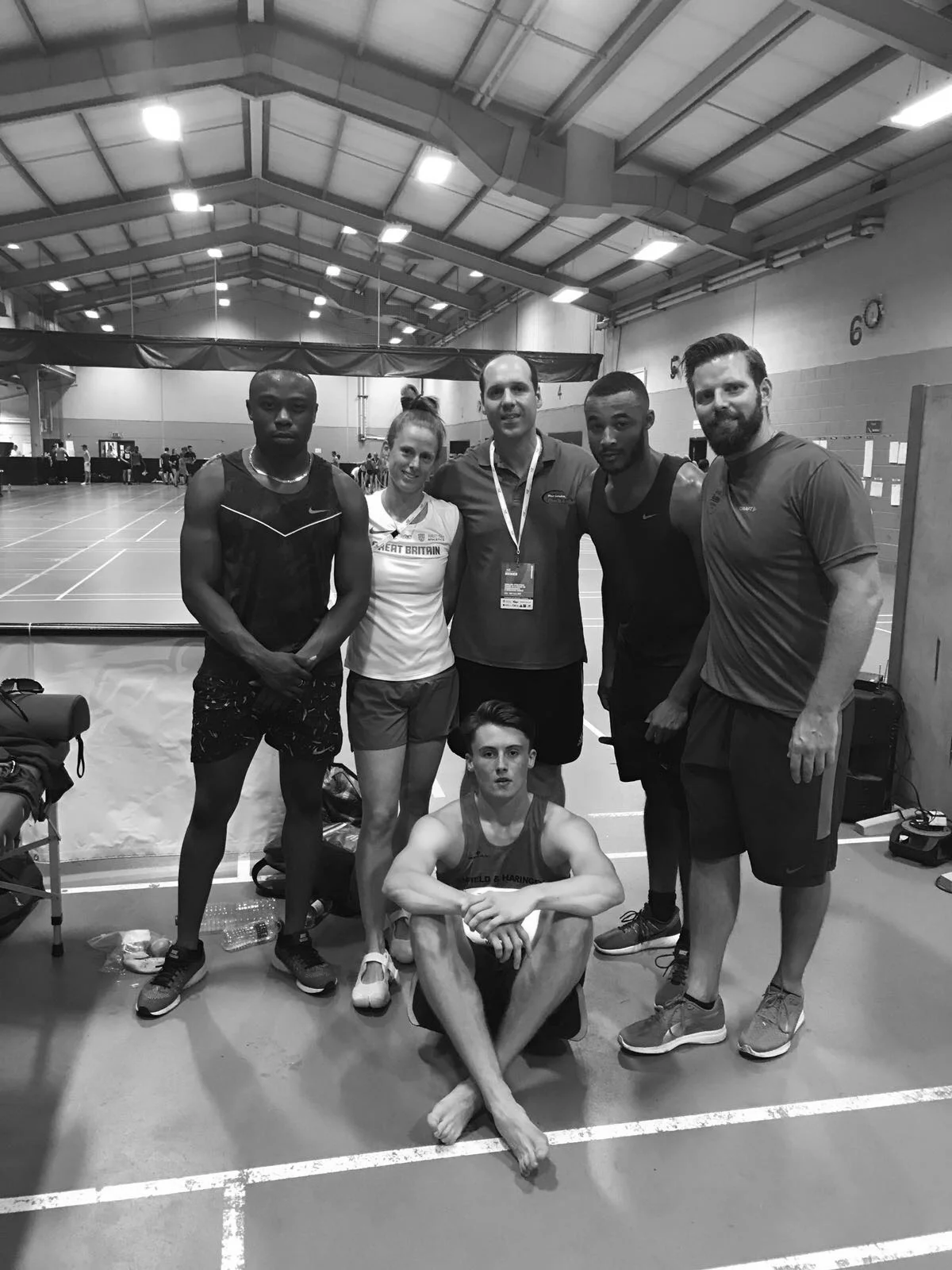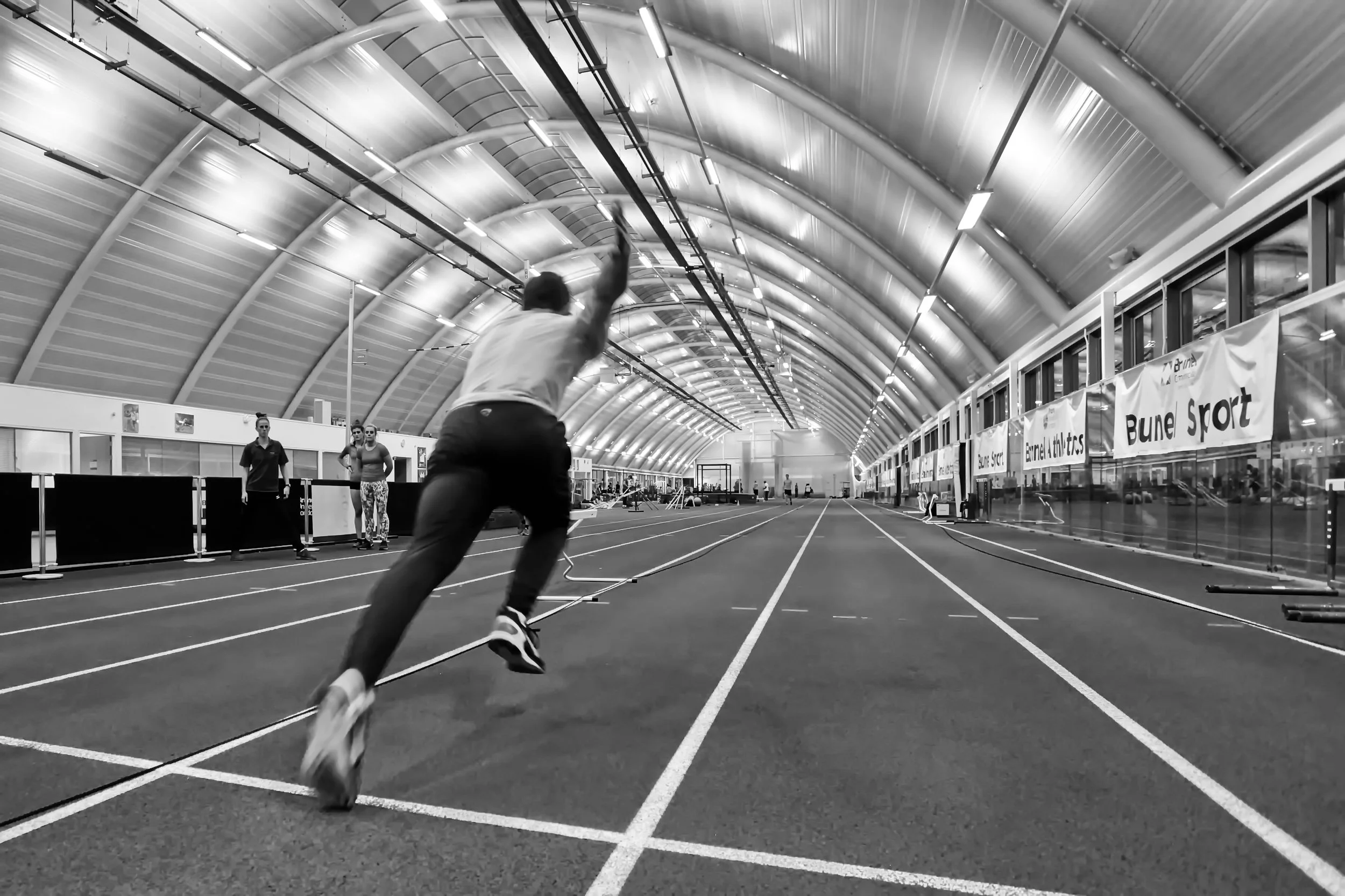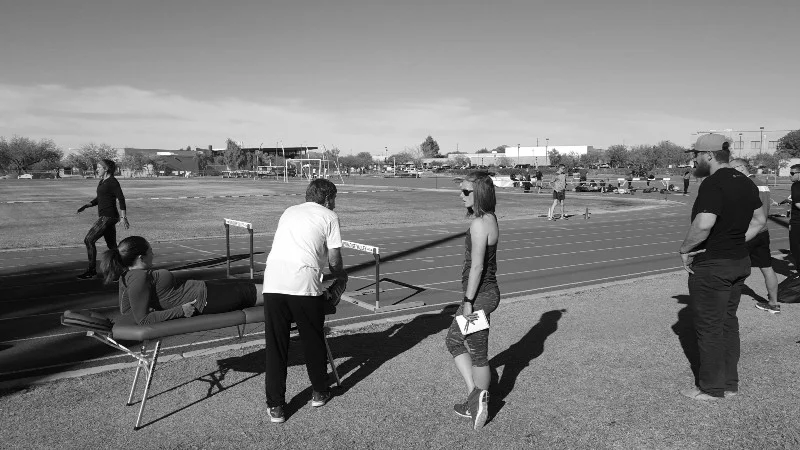One of the critical determinants of pole vault success, is the ability of a vaulter to rotate the pole to the vertical. It is this factor that limits the height of the grip an athlete can take on the pole. If the grip is too high, then the pole will fail to reach the vertical and the vault will “stall” and ultimately be unsuccessful – not to mention endangering the athlete involved. If the vaulter wishes to increase their grip height, they must improve their ability to rotate the pole to the vertical. The height an athlete can grip on the pole is determined by;
i.) The speed they can achieve on the approach run, and critically, the speed (energy) they can take into the take-off – “Speed at take-off”
ii.) The efficiency with which the athlete transfers that speed (energy) into the pole at take-off – “Take-off efficiency”
The more speed an athlete can generate on the approach run, the higher the energy they have to potentially utilise in the vault. This energy serves multiple factors, but critically, it gives the potential to increase the rotation of the pole to vertical and increases the shortening of the pole (chord) length (increases bending), which subsequently further increases pole rotation; if combined with increased horizontal speed. Therefore, two critical training components emerge from this;
1. Coaches must attempt to develop the speed qualities of the vaulters they work with
2. Coaches must develop an approach run structure that serves to maximise the velocity of the vaulter at the point of take-off
However, maximising speed alone does not solve the challenge of maximising grip height. The athlete must possess the ability to convert that speed at take-off. This conversion takes two forms; firstly the conversion of some horizontal speed to vertical speed (i.e. an ability to “jump”), and secondly, the ability to transfer the speed into the pole. We regularly see athletes with great speed qualities who are ineffective in utilising it effectively at take-off – this highlights an imbalance in the athlete’s speed and their ability to use it in a jumping event. The short term solution to this is to reduce the speed that the athlete has access to – i.e. to shorten their approach run length or get them to run slower on the approach run! However, longer term, it places a requirement on the coach to develop the athlete’s take-off efficiency, which can be achieved by addressing the following (depending on the limitation that the athlete faces);
1. Improve the athlete’s horizontal position from the back of the box at the point of take-off. There is an optimum “zone” that the athlete can take-off from in relation to their grip height. This “zone” permits the athlete to be between mid-stance and toe-off during their take-off step ground contact, when the pole strikes the back of the box. If the pole connects before mid-stance, the athlete is likely too close to the box and their ability to transfer horizontal speed to vertical speed will be compromised. If the pole connects after toe-off, their ability to transfer speed to the pole, while maintaining horizontal speed, will be compromised.
2. Develop the athlete’s posture at take-off. The athlete must strive to maximise their take-off height – this requires great postural awareness and execution, together with the running and pole plant mechanics to optimise their postural position at take-off.
3. Assist the athlete to understand and maximise their intention at take-off. This comes from optimising the stride length / frequency ratio over the final steps of the approach run, from setting up the take-off step effectively and (as Mondo Duplantis recently said in an interview), trying to “hit” the pole as hard as possible at take-off.
If coaches can support the development of an athlete’s speed, which they can both achieve and effectively utilise at take-off, the athlete has the best opportunity of maximising their grip height on the pole.
For clarity, we will refer to the phases of the vault after the athlete leaves the ground as the “on pole” phase and the actions that they perform during this time, their “on pole” technique.
For an athlete to “fly” from the top of the pole and maximise their push height, there are two key variables that must be optimised;
i.) The stiffness of the pole that the athlete is using – “Pole stiffness”
ii.) The technique that the athlete employs while swinging on the pole – “On pole technique”
Pole stiffness is a critical variable in supporting an athlete to achieve greater push heights. The stiffer the pole, the greater the potential for energy storage and subsequently energy return later in the vault. The greater the energy return in the latter stages of the vault, the greater potential for the athlete to be projected higher above their top hand grip height. However, an athlete cannot simply use a stiffer pole – sadly, it is not that simple! It is harder to store the energy in a stiffer pole in the initial “on pole” phase of the vault – which results in less bending and subsequently less rotation of the pole to the vertical (as discussed previously). The technique that the athlete employs to bend the pole must be considered and optimised without compromising other aspects of the vault (which will be discussed later). Additionally, there is a greater requirement for the athlete to be able to physically resist the forces that come from the pole back to the athlete when they use a stiffer pole. From this, coaches need to consider developing the following qualities in their athletes;
1. Develop an “on pole” technique that promotes pole bending without compromising their ability to swing effectively
2. Physically prepare athletes for the forces that they will experience when using stiffer poles. This includes the stabilisation of the shoulders and lumbar spine, and the mobilisation of the thoracic spine and the hips



